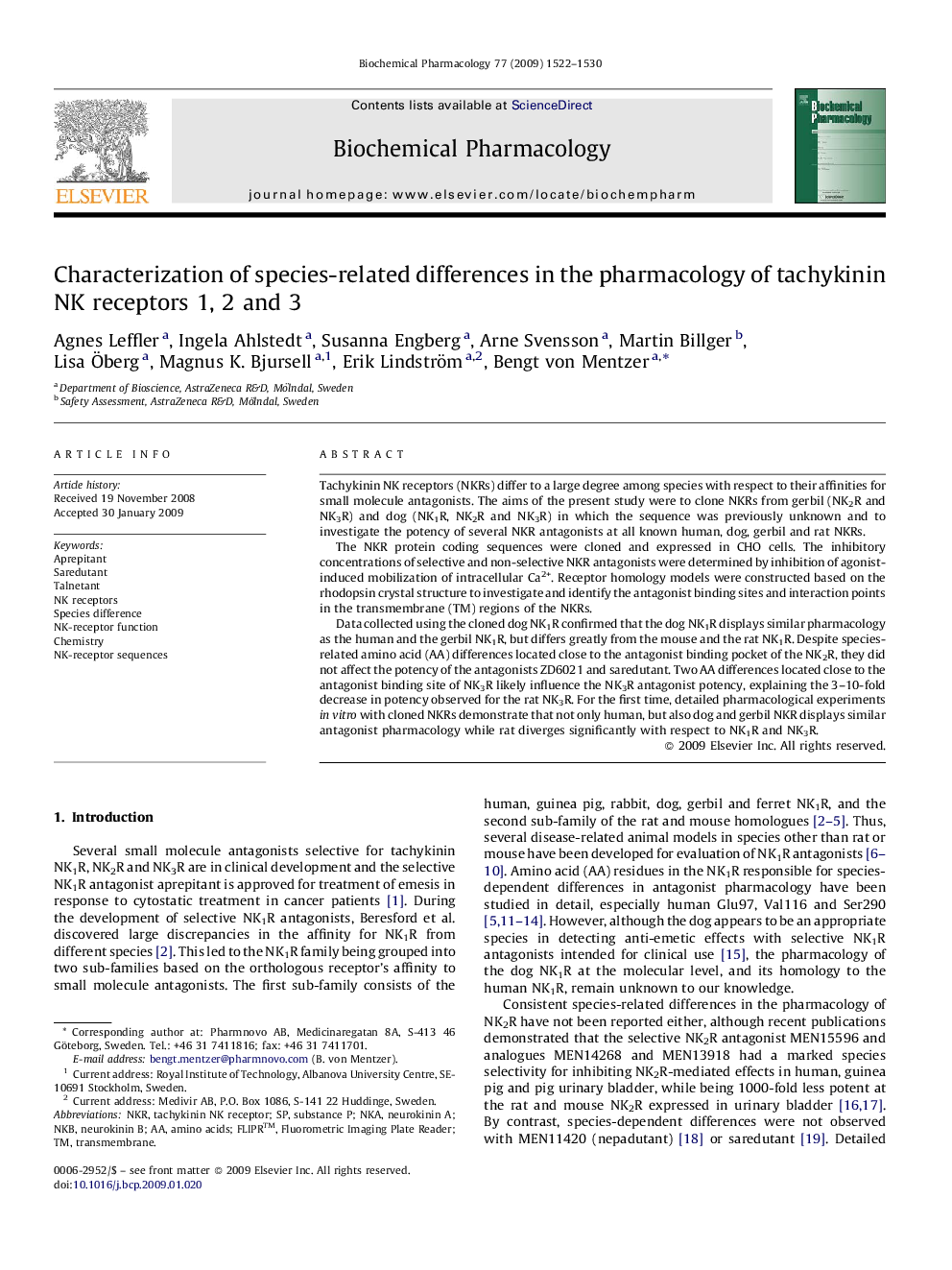| کد مقاله | کد نشریه | سال انتشار | مقاله انگلیسی | نسخه تمام متن |
|---|---|---|---|---|
| 2514002 | 1118443 | 2009 | 9 صفحه PDF | دانلود رایگان |

Tachykinin NK receptors (NKRs) differ to a large degree among species with respect to their affinities for small molecule antagonists. The aims of the present study were to clone NKRs from gerbil (NK2R and NK3R) and dog (NK1R, NK2R and NK3R) in which the sequence was previously unknown and to investigate the potency of several NKR antagonists at all known human, dog, gerbil and rat NKRs.The NKR protein coding sequences were cloned and expressed in CHO cells. The inhibitory concentrations of selective and non-selective NKR antagonists were determined by inhibition of agonist-induced mobilization of intracellular Ca2+. Receptor homology models were constructed based on the rhodopsin crystal structure to investigate and identify the antagonist binding sites and interaction points in the transmembrane (TM) regions of the NKRs.Data collected using the cloned dog NK1R confirmed that the dog NK1R displays similar pharmacology as the human and the gerbil NK1R, but differs greatly from the mouse and the rat NK1R. Despite species-related amino acid (AA) differences located close to the antagonist binding pocket of the NK2R, they did not affect the potency of the antagonists ZD6021 and saredutant. Two AA differences located close to the antagonist binding site of NK3R likely influence the NK3R antagonist potency, explaining the 3–10-fold decrease in potency observed for the rat NK3R. For the first time, detailed pharmacological experiments in vitro with cloned NKRs demonstrate that not only human, but also dog and gerbil NKR displays similar antagonist pharmacology while rat diverges significantly with respect to NK1R and NK3R.
Experiments with neurokinin receptors (NKRs) demonstrate that not only human, but also dog and gerbil NKR displays similar antagonist pharmacology while rat diverges significantly with respect to NK1R and NK3R.Figure optionsDownload as PowerPoint slide
Journal: Biochemical Pharmacology - Volume 77, Issue 9, 1 May 2009, Pages 1522–1530